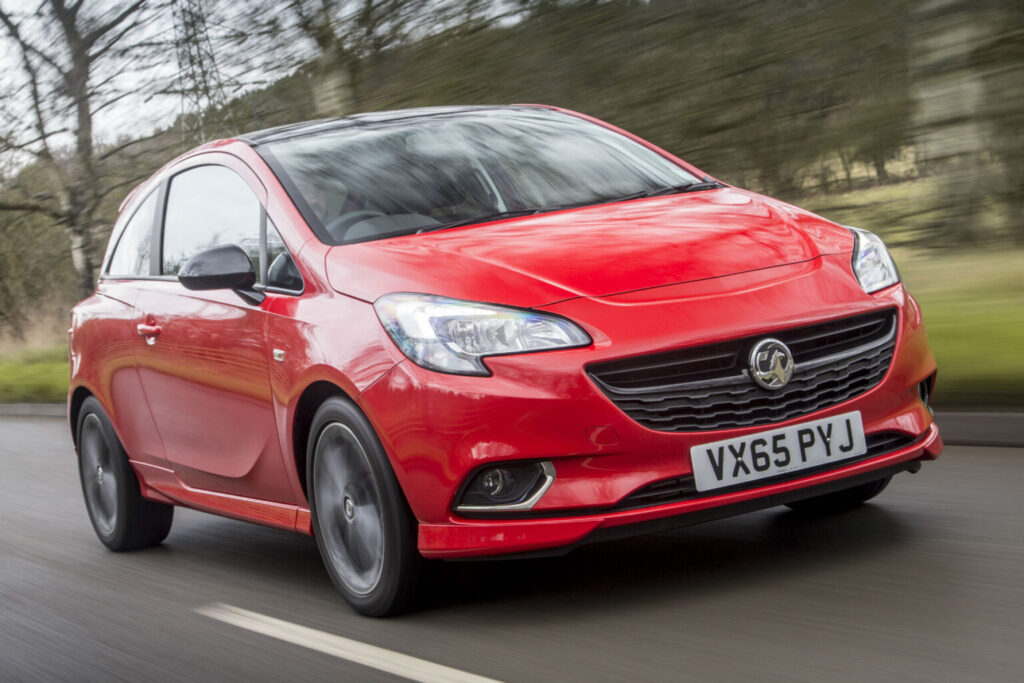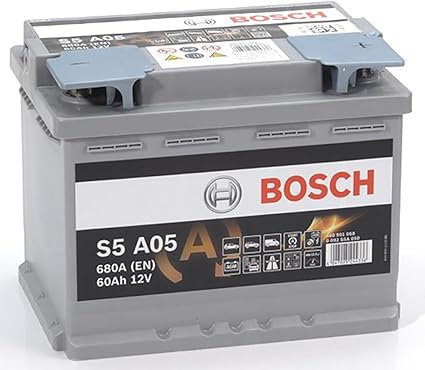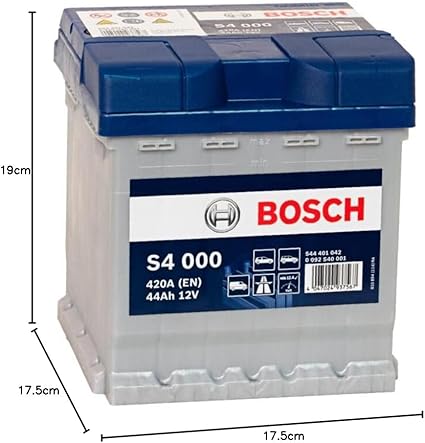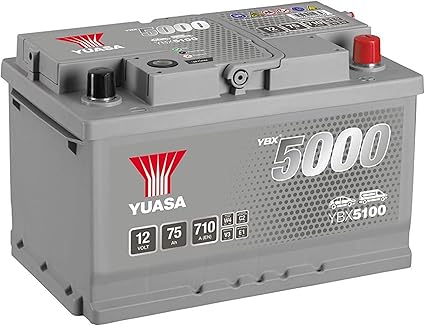If you have ever turned your key on a cold morning and all you heard was a weak click, you already know the frustration of a tired car battery. For Vauxhall Corsa owners, choosing a battery can sometimes be confusing. You will hear people mention a Type 63 battery or a Type 75 battery, and unless you are a mechanic, those numbers don’t mean much at first.
But here is the good news. Choosing the right battery is not complicated at all. You just have to know what those numbers mean. Which engines they apply to and how they affect everyday driving, to understand everything clearly. In this guide, we will talk about why the battery is so important, the difference between Type 63 and Type 75, and how to know which one your Corsa really needs.
Grab a coffee and let’s walk through it step by step.
Why Your Vauxhall Corsa Car Battery Matters
Most people think of a car battery as the thing that starts the engine, and yes, that is its main job. But in reality, your Vauxhall Corsa car battery does much more. It powers the electrics when the engine is not running. It gives the starter motor the surge it needs to fire up the engine, and it stabilises voltage so your car’s electronics don’t get fried.
Think about how many things rely on that little black box: headlights, interior lights, infotainment system, heater, wipers, charging ports, sensors, and even safety systems like ABS. Without a healthy battery, all of that is compromised. So if the wrong battery is fitted, you can end up with an alternator working overtime to keep up, which means more breakdowns and more bills down the road.
That’s why picking between a Type 63 battery and a Type 75 battery is not just a random choice. It is about matching your Corsa’s needs so everything runs smoothly.
The Mystery of the Numbers: What Do 63 and 75 Mean?
It may sound like some secret code when you hear mechanics or suppliers say Type 63 or Type 75. In reality, it is just a way of standardising battery sizes and specs.
- A Type 63 battery is the smaller of the two. It usually carries around 45 to 50Ah (amp-hours) and offers 350 to 450 CCA (cold cranking amps).
- A Type 75 battery is typically larger in the 60 to 70Ah range and pushes 550 to 650 CCA or more.
Amp-hours (Ah) are basically the fuel tank size for your battery. The bigger the number, the more energy it can store. Cold cranking amps (CCA) is how much raw power it can give at once to start the car, especially in chilly weather.
So the numbers don’t just tell you size. They tell you how much “muscle” the battery has.
Type 63 Battery: The Smaller Workhorse
Let’s say you own a Corsa with a 1.0 or 1.2 engine. You are probably not running half a dozen extras, and your daily driving is town runs, school drop-offs, and the occasional motorway trip. In that case, a Type 63 battery is more than enough.
Why It Works:
- It is lighter and compact, so it fits neatly into smaller battery trays.
- It is affordable, which matters if you are on a budget.
- It delivers exactly the amount of power your smaller engine needs without overkill.
I had a neighbour with a 1.2-litre Corsa who thought he would be clever and upgrade to a bigger battery, thinking “bigger must be better.” But the tray wouldn’t hold it properly, and the terminals were stretched. In the end, he swapped back to a Type 63 battery, and the car has been happy ever since.
Where It Falls Short:
- If you have add-ons like a heavy sound system, extra lights, or you are in a very cold climate, the reserve power is not great.
- It is not the right choice for larger engines, as it will struggle to crank them over consistently.
For everyday city use and smaller engines, the Type 63 battery is the practical, no-fuss option.
Type 75 Battery: The Bigger Powerhouse
Now let’s talk about the Type 75 battery. This one is the go-to for Corsas with 1.4 and 1.6 engines or for anyone running more electrics. If your Corsa has features like air conditioning, heated seats, or the stop-start system that cuts the engine at traffic lights, you will want the extra muscle.
Why It’s Worth It:
- Provides the extra cold cranking amps to start bigger engines reliably.
- Handles high electrical loads without dimming your headlights.
- Gives you peace of mind in cold weather, when starting takes more juice.
A friend of mine drives a Corsa VXR with the 1.6 turbo engine. He used to have constant trouble in winter. The car would just groan on startup. Once he swapped to a Type 75 battery, the problem disappeared. Yes, it was pricier, but it solved months of stress in one go.
Downsides?
- Costs more, no denying it.
- Heavier and not every tray has space for the bigger footprint.
Still, if you have got the larger engine or plenty of extras, the Type 75 battery is money well spent.
Comparing Type 63 vs Type 75 in Real Terms
Here is a simpler way to picture it.
- Think of the Type 63 battery as the sensible commuter car of batteries: economical, does the job, nothing flashy.
- The Type 75 battery is more like an SUV. It is a bit bulkier, more capable, and built to carry extra weight without complaining.
Both will get you from A to B. One is designed for a lighter workload. The other is made for heavier demands.
How to Know Which One Your Corsa Needs
Here are some foolproof checks before you spend your cash:
- Check what is already fitted. The old battery will usually have “063” or “075” printed on the label.
- Match your engine size. Under 1.2L → go with Type 63. 1.4L or 1.6L → go with Type 75.
- Check your space. Pop the bonnet and measure the tray. If it’s tight, the bigger battery would not fit.
- Think about your extras. Lots of gadgets? Heated screens? Go larger.
- Climate check. If you live somewhere cold, a Type 75 battery gives you the stronger cranking power you will need.
Signs You Need a New Battery Anyway
It doesn’t matter what type you have because no battery lasts forever. Here are the warning signs:
- Slow cranking when you start.
- I have needed jump-starts more than once in recent weeks.
- Flickering lights or weak electricity.
- A battery warning light is glowing on the dashboard.
Most car batteries last 3–5 years, so if yours is hitting that mark, plan ahead rather than waiting for the morning it leaves you stuck.
A Few Tips to Make Your Battery Last Longer
Replacing a battery is not the cheapest job, so it is worth taking care of it. Here is how:
- Drive the car regularly and for decent distances. Short hops don’t recharge the battery properly.
- Keep the terminals clean. A bit of corrosion can ruin the connection.
- Make sure the battery is strapped in tightly. Vibration shortens its life.
- Don’t leave lights or heaters on when the engine’s off. Easy mistake, but it quickly drains batteries.
These are small habits, but they save money and hassle.
Wrapping It Up
So, which should you choose? It is not rocket science. Got a 998cc or 1.2-litre Corsa? Stick with the Type 63 battery. Driving a 1.4 or 1.6, or a model with plenty of gadgets? Invest in the Type 75 battery. Pick the right size, make sure it fits, and buy from a trusted brand. That way, you will get years of trouble-free starts.
At the end of the day, the battery might be small, but it decides whether you are cruising down the road or stuck at home with the bonnet up. So choose wisely and your Corsa will thank you every time you turn the key.
Power Up Your Drive: Get Our Car Batteries
-
Bosch S5005 63Ah 610A Car Battery, Lead-Acid, Type 027 – No Start/Stop
£89.00 -
Bosch S5A05 60Ah 680A AGM Start-Stop Car Battery
£110.21 -
VARTA A7 (E39) 12V 70Ah 760A AGM Start-Stop xEV Car Battery
£164.94 -
Bosch S4000 44Ah 420CCA Lead-Acid Car Battery
£53.35 -
Yuasa YBX5100 12V 75Ah 680CCA Silver Sealed Maintenance-Free Car Battery
£84.56








